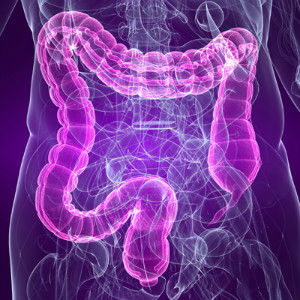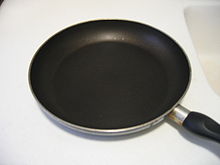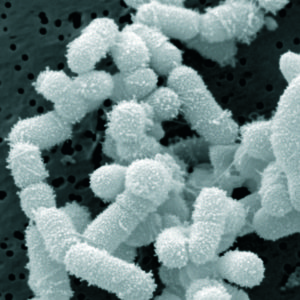 The millions of bacteria, fungi, viruses (human microbiome) that live on and within us are extremely important for our health in all sorts of ways. The birth experience (as the baby travels down the birth canal) is one way that a mother's microbes get transmitted to the baby ("seeds" the baby's microbiome). But babies born by Cesarean delivery start out picking up different species of microbes - from dust in the operating room.
The millions of bacteria, fungi, viruses (human microbiome) that live on and within us are extremely important for our health in all sorts of ways. The birth experience (as the baby travels down the birth canal) is one way that a mother's microbes get transmitted to the baby ("seeds" the baby's microbiome). But babies born by Cesarean delivery start out picking up different species of microbes - from dust in the operating room.
Thus there has been concern with the possibility that a baby born by C-section, as compared to a vaginal delivery, will have life long microbiome differences. Swedish researchers studied this issue in 471 children and determined that by 5 years of age that the microbiome differences at birth and first year of life have generally disappeared. The differences in microbial composition had decreased to less than 2% in the 2 groups. This is good news!
Over the 5 years everyone had a great increase in the number of microbial species that live in the gut. The gut microbiome became more "adult-like", but it wasn't yet like that of adults. A conclusion was that not only does it take years to develop adult microbial complexity, but there is also individual variation in how long this takes. A person's diet, especially the introduction of solid foods, and environment all have an effect on species diversity and composition.
By the way, another way mothers transmit hundreds of species of microbes to their babies is during nursing in the breast milk (this is great!), and these species change over time. This is a good reason to breast feed - it's not just the nutrition, but also the microbes.
From Science Daily: Gut microbiota in Cesarean-born babies catches up
Infants born by cesarean section have a relatively meager array of bacteria in the gut. But by the age of three to five years they are broadly in line with their peers. This is shown by a study that also shows that it takes a remarkably long time for the mature intestinal microbiota to get established. ...continue reading "Five Year Olds Have Similar Gut Microbes, No Matter the Type of Birth"


 In the future, giving specific microbes or entire microbial communities may be part of some cancer treatments! This is because the composition of a person's gut microbiome (the community of bacteria, fungi, and viruses) influences whether a person responds to immunotherapy drugs. This means that the mixture and variety of microbial species living in your intestines may determine whether you respond to cancer immunotherapy drugs. Wow!
In the future, giving specific microbes or entire microbial communities may be part of some cancer treatments! This is because the composition of a person's gut microbiome (the community of bacteria, fungi, and viruses) influences whether a person responds to immunotherapy drugs. This means that the mixture and variety of microbial species living in your intestines may determine whether you respond to cancer immunotherapy drugs. Wow! There is strong evidence for a link between the foods a person eats, the microbes that live in the person's gut (gut microbiome), and the person's health, according to a large
There is strong evidence for a link between the foods a person eats, the microbes that live in the person's gut (gut microbiome), and the person's health, according to a large  It turns out that people experiencing a major depression have differences in their gut microbiome (community of microbes) when compared to healthy people who are not depressed. A persistent and prolonged period of extreme sadness or depression is called a major depressive disorder (MDD).
It turns out that people experiencing a major depression have differences in their gut microbiome (community of microbes) when compared to healthy people who are not depressed. A persistent and prolonged period of extreme sadness or depression is called a major depressive disorder (MDD). To boost the immune system of young children, as well as improve their skin and gut microbiomes - send them out daily to play in a natural environment. That means outdoors in a natural park-like setting with grass, plants, soil, and trees. Yes, germs and dirt!
To boost the immune system of young children, as well as improve their skin and gut microbiomes - send them out daily to play in a natural environment. That means outdoors in a natural park-like setting with grass, plants, soil, and trees. Yes, germs and dirt! This is rarely mentioned, but there is research showing that commonly used chemicals that we are exposed to, such as bisphenols (BPA, BPS), phthalates, persistent organic pollutants (e.g.flame retardants, nonstick cookware), heavy metals (e.g. lead), and some pesticides (e.g.chlorpyrifos, glyphosate), all have an impact on the gut microbiome in animals and humans.
This is rarely mentioned, but there is research showing that commonly used chemicals that we are exposed to, such as bisphenols (BPA, BPS), phthalates, persistent organic pollutants (e.g.flame retardants, nonstick cookware), heavy metals (e.g. lead), and some pesticides (e.g.chlorpyrifos, glyphosate), all have an impact on the gut microbiome in animals and humans. There have been concerns for years about the food additive titanium dioxide. This is because it may be in nanoparticle form, and
There have been concerns for years about the food additive titanium dioxide. This is because it may be in nanoparticle form, and  Good news today! I am happy to report that I (and family members) are now in our 8th year of successfully using probiotics to treat and conquer sinusitis. This includes both chronic sinusitis and regular sinus infections. Yes! This means no antibiotics or any other antibacterial has been used in more than 7 years.
Good news today! I am happy to report that I (and family members) are now in our 8th year of successfully using probiotics to treat and conquer sinusitis. This includes both chronic sinusitis and regular sinus infections. Yes! This means no antibiotics or any other antibacterial has been used in more than 7 years.